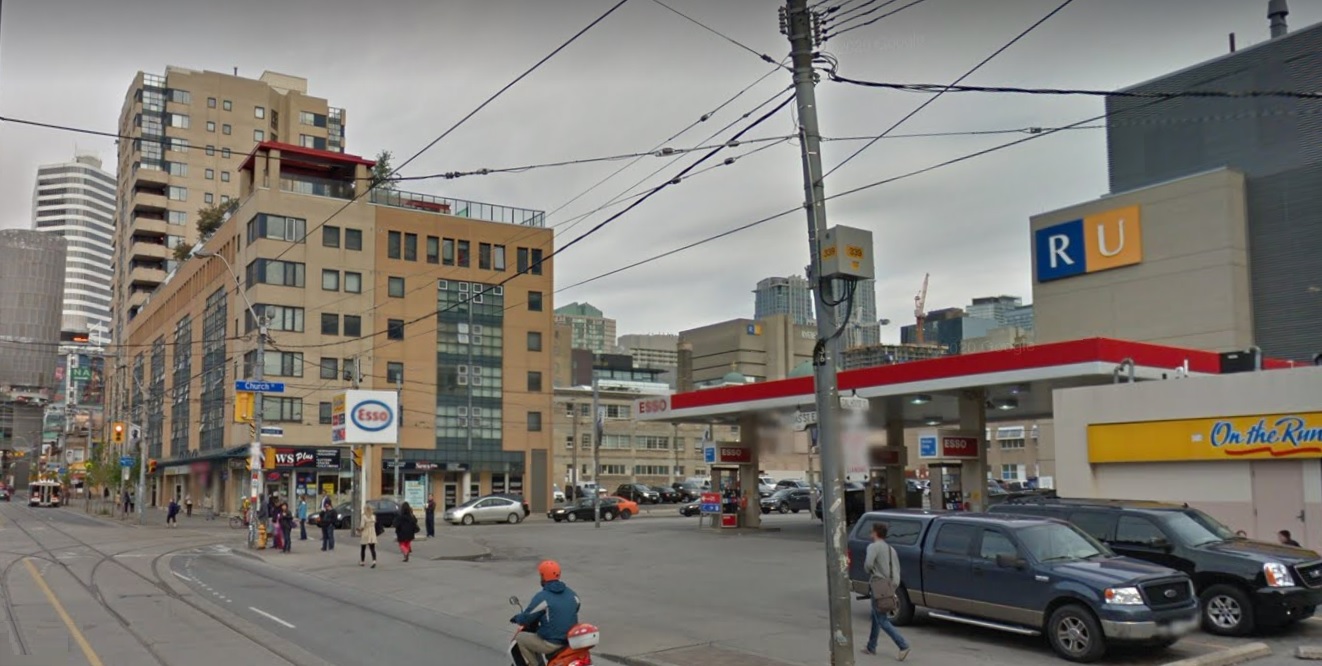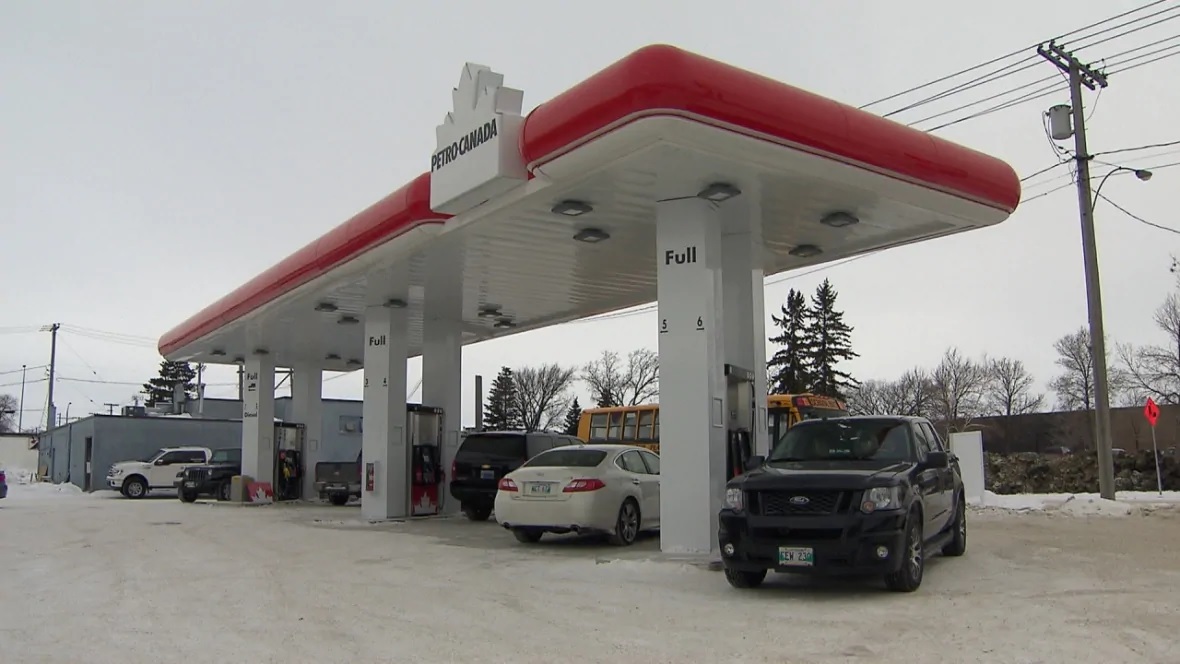A gasoline station in downtown Toronto has been sold.
As you drive in your daily life, you may subconsciously notice that a long standing and once familiar gas station has been closed, and what remains is an empty lot. Undoubtedly this will be replaced by some other building with a completely different purpose.
One of those stations to go is situated in the heart of downtown Toronto

The site at 241 Church Str. in the downtown core of Toronto, In four years the property value has skyrocketed. The 53 story condo planned is just one of several others hi-rises planned in the immediate area. ( Google streetview))
So what, you say. Well a few things.
The station and property were purchased for a mere $4.6 million just four years ago in 2016. It’s now been sold for a whopping $73 million.
This shows the skyrocketing price of property in Toronto, especially downtown where there is almost no space left to develop. The developer plans to turn the spot into yet another high-rise condo (53 story) to join the already vast number of similar high-rise condos and offices in the city.
Sales of commercial and residential properties in Canada’s largest city continue to exceed past sales and prices and even in spite of COVID”s hit to the economy, continue to defy all the ongoing predictions that the Toronto real-estate ‘bubble will burst’.
The sale however also signals another trend. The station is one of the very few remaining in downtown Toronto. In major cities across Canada (and the U.S) gasoline stations are quietly being closed. The value of the property far exceeding the value of the retail operation is one thing, but the other is the slow decline of stations as companies seek to consolidate resources, reduce overhead. One can wonder if fewer stations also means less competition.
In 1999 there were over 20,000 retail gasoline stations in Canada. After a steep decline in the following ten years, the rate of disappearing gas stations has slowed to a trickle. At the end of December 2019 the decline National Retail Petroleum’s site census showed 11,937 retail petroleum outlets in Canada, close to half of what there were twenty years ago. However, there has been a very slight increase as big box retail outlets in some cases have added a ‘gas bar’ to their operation.

‘Traditional” gas stations with service bays are disappearing. Taking their place, if at all, are ‘gas bar’ type operations like this one in Winnipeg (CBC)
Changing habits, lifestyles are also affecting retail gas station operations, with most now being attached to small convenience stores, while actual ‘servicing/repair’ types stations are fewer and far between as cars become more complex. Most outlets now are of the “gas bar” type.
Another factor is the slowly increasing sales of hybrids electric vehicles requiring less fuel, an fully electric vehicles edging their way into the market and supplanting internal combustion engine vehicles.
In any case, the once popular idea of hanging out at the neighbourhood gas station, or for young people to get a first job at the ‘service station’ as a ‘pump jockey’ is now a long distant memory
additional information-sources







For reasons beyond our control, and for an undetermined period of time, our comment section is now closed. However, our social networks remain open to your contributions.